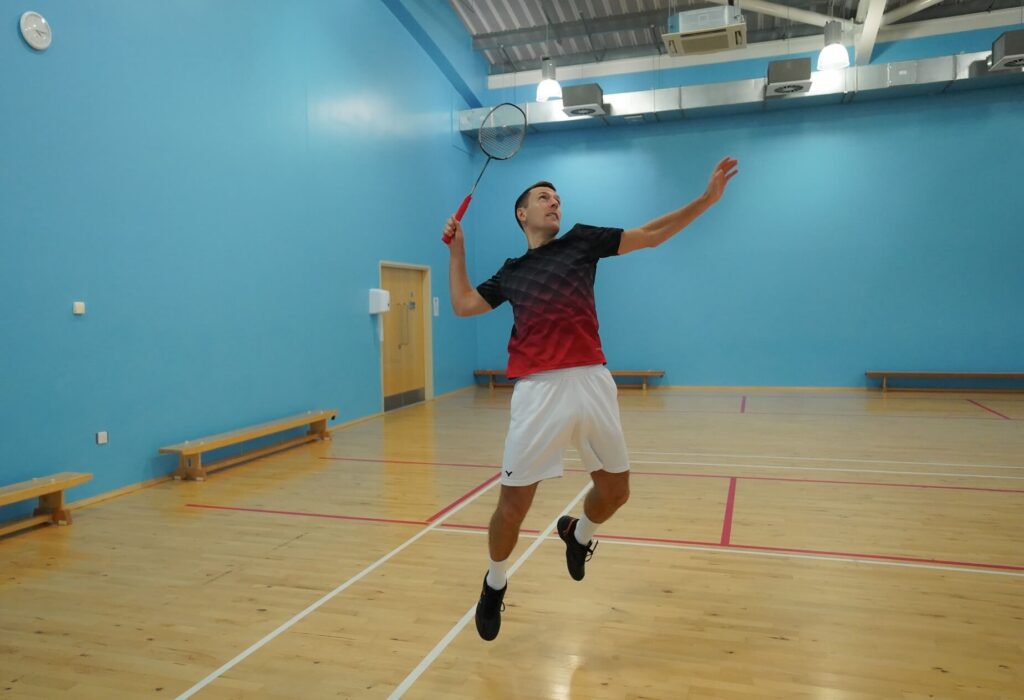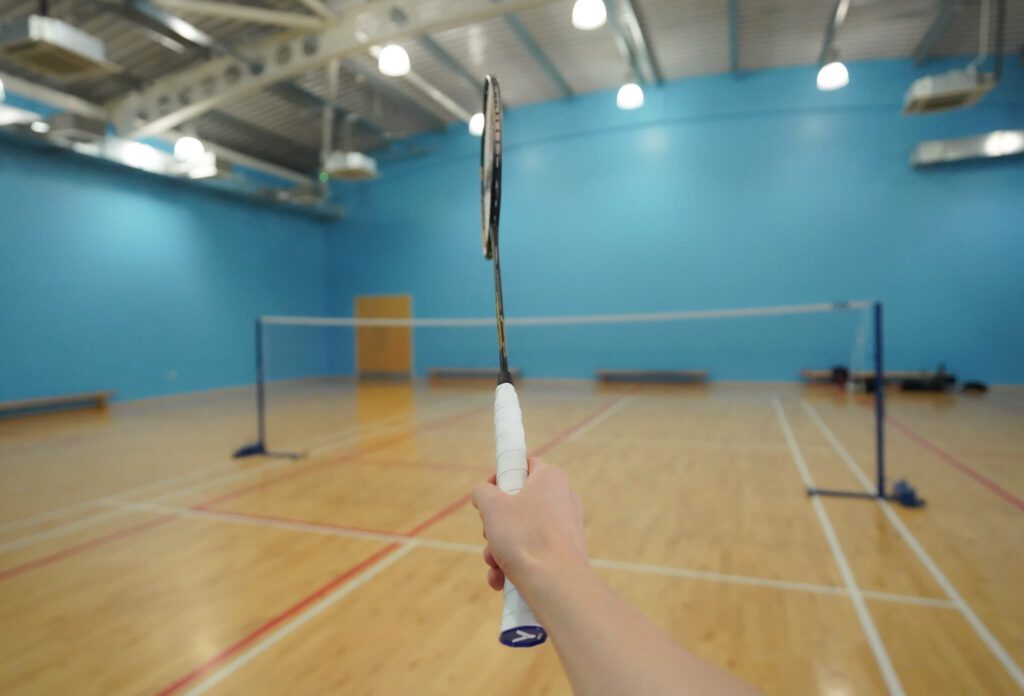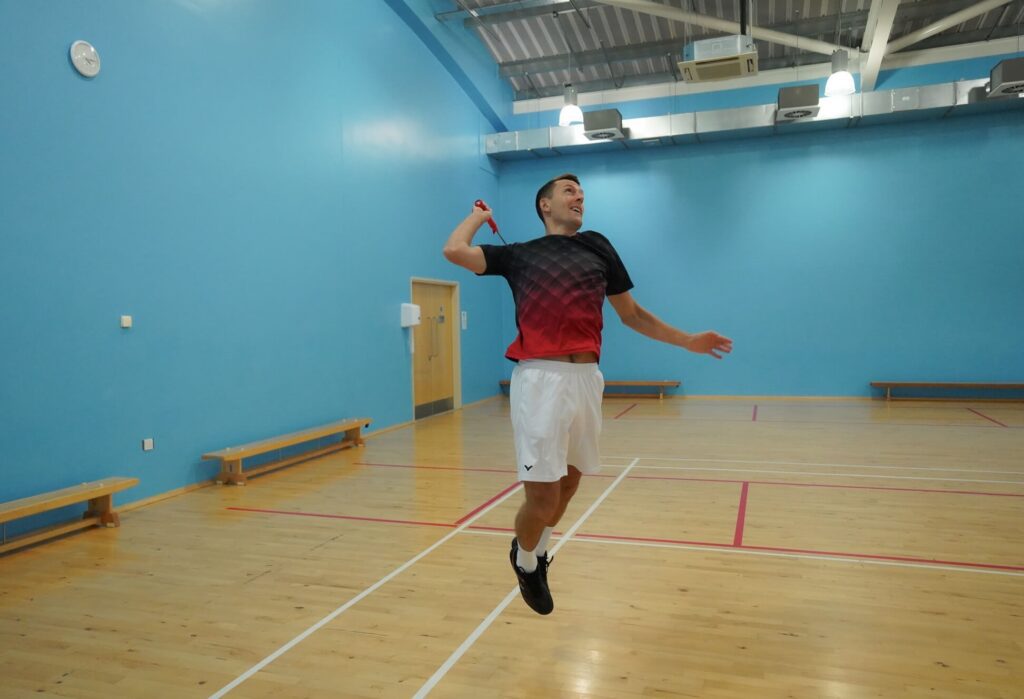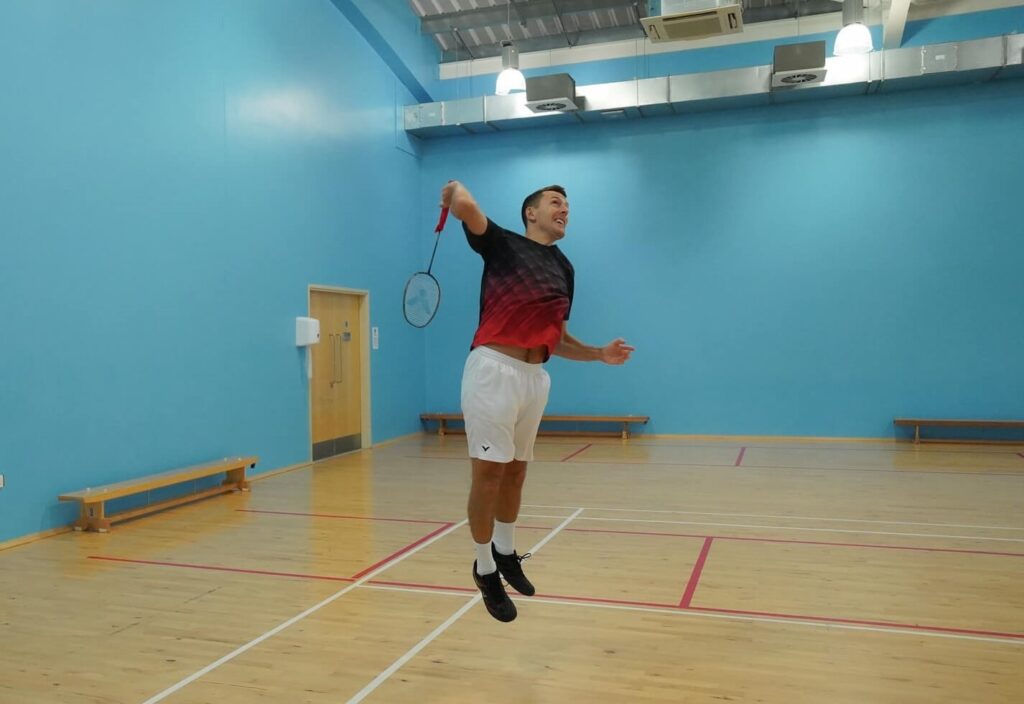How To Smash In Badminton - Step-By-Step (With Pictures)
The badminton smash is an attacking downwards shot used to try and win the rally or produce a weak reply from the opponents. It can reach speeds of up to 565 km/hour!
To hit a powerful badminton smash, you need to be behind the shuttle when hitting the smash, hold the racket at the bottom of the grip handle, and rotate your hips, torso and shoulder to generate a fast racket head speed, transferring your bodyweight forwards into the shuttle.
We’ll now break down everything you need to know about the badminton smash, including:
Article Contents
When Should You Play The Smash?
Whilst smashing is a fun shot to play, it’s not always the right shot! For example, we would advise not playing a smash if:
- Your opponent has lifted the shuttle deep towards the backline of the court
- You are off balance and out of position
Hitting a smash in these scenarios could put you (and your partner in doubles) into trouble, potentially leading to you losing the rally. Instead, you should focus on playing a good variety of shots to put your opponent/s under pressure, then when the right opportunity comes up (such as a short lift), you can go for the smash!
Like we always say though, there is rarely any definitive ‘right or wrong’ in badminton and if your smash is winning you points wherever you play it from, then keep doing it!
Smash Preparation: Body Positioning And Grip
Step 1: Try to make sure you’re behind the shuttle when hitting the smash – about half a metre behind it is optimal.
This is because lot of power comes from rotating your body forwards into the shot. So if you take the shuttle slightly behind you, then your momentum won’t be going forwards, which reduces your power.
Step 2: Your body should be facing sideways in your preparation phase, with your racket arm at around a 90-degree angle, and your non-racket arm pointing upwards to help with timing, balance and rotation, as shown below:

💡Top Tip: Try to have a similar preparation for all your overhead shots (smash, clear, drop) as this can make your shots more deceptive and harder for your opponent to anticipate!
Step 3: When hitting the smash you should hold your racket in a forehand grip, with your hand at the bottom of the grip handle. This creates a longer lever which helps you generate more power. The grip is the most important part of the technique and pivotal for beginners to get right.

Step 4: You need to have a loose grip and relaxed body up until the last second before you strike the shuttle. This helps to create extra speed in the racket.
Now you have prepared your racket and body for the smash, let’s move onto the hitting technique!
Smash Technique: How Do You Play The Smash?
Step 5: The next step is all about rotation of the hips, torso and shoulder. These major muscle groups work together to help you generate a fast racket head speed, and forwards momentum.
💡 Having a fast racket head speed is the main goal when trying to create a powerful smash, as a fast racket head speed is strongly correlated with shuttle speed.
You generate energy from your legs, then rotate your hips, then upper torso, then your shoulders and elbow come through, as well as your forearm and wrist. This rotation of the body means you can put all of your bodyweight into the smash (not just your arm), which helps you generate maximum power.
Step 6: As you are rotating your torso, it’s important to keep the elbow back, and delay the forward movement of your arm. This action stretches the chest which means that the final movement which pulls the elbow forwards is more powerful and the elbow comes through faster as a result.


💡 It’s not just the wrist that creates the power, but is everything combined (as described above)!
A study at Loughborough University found that the optimal point of contact was here:

This is interestingly just off centre (2cm above the centre and 1cm towards the inside to be precise) and highlights that the most powerful smashes aren’t hit in the exact centre of the racket! This was said to be because as the players hit the smash, they pronate or turn their racket head slightly away from their head, which therefore impacts the hitting point.
Where Should You Smash To?
A smash is not all about power, but the placement of the smash is also very important (and is often overlooked).
You should aim to hit your smash away from your opponents racket. This might be to either side of the court, towards their right hip if they are right handed or left hip if they are left handed, or down the middle in doubles.
Sometimes, hitting with 80% power but perfect placement will be better than hitting with 100% power but straight onto your opponents racket!
How Should You Practice The Smash Shot?
There are many different ways to practice the smash. Here are 3 practices, that you can progress through as you improve your smash technique:
Practice 1: A partner hits high serves to you, and you hit individual smashes. This practice is especially important for beginners as they can focus on developing the correct preparation and hitting action. We would recommend taking your time in between each smash, as having time to assess the smash and provide yourself with intrinsic feedback is crucial to the development of the technique.
Practice 2: This is a 2-shot combination, and you can do a variety of combinations.
- Option 1 is to hit a shot, such as drop shot on one side of the court and then your partner lifts to the other side and you smash. This helps you practice the movement into the smash.
- Option 2 is to hit the smash, and then your partner hits it back to the mid-court and you either drive or push the shuttle. This helps you practice the movement after the smash.
Practice 3: This is an open practice where you are doing something like rear-mid which incorporates the smash. You can find a range of practices that incorporate the smash here.
Another way you can gain valuable feedback is to record yourself playing smashes, you can then compare your technique to the suggested methods in this post. You can also see several demonstrations in the video below.
Learn More
Hopefully we’ve now shown you that having a more powerful smash is not just about being physically stronger, but your preparation and technique play a HUGE role too!
And lastly, if you’d like to see more visual explanations of what we’ve discussed above, you can watch our YouTube video on how to smash in badminton below!

